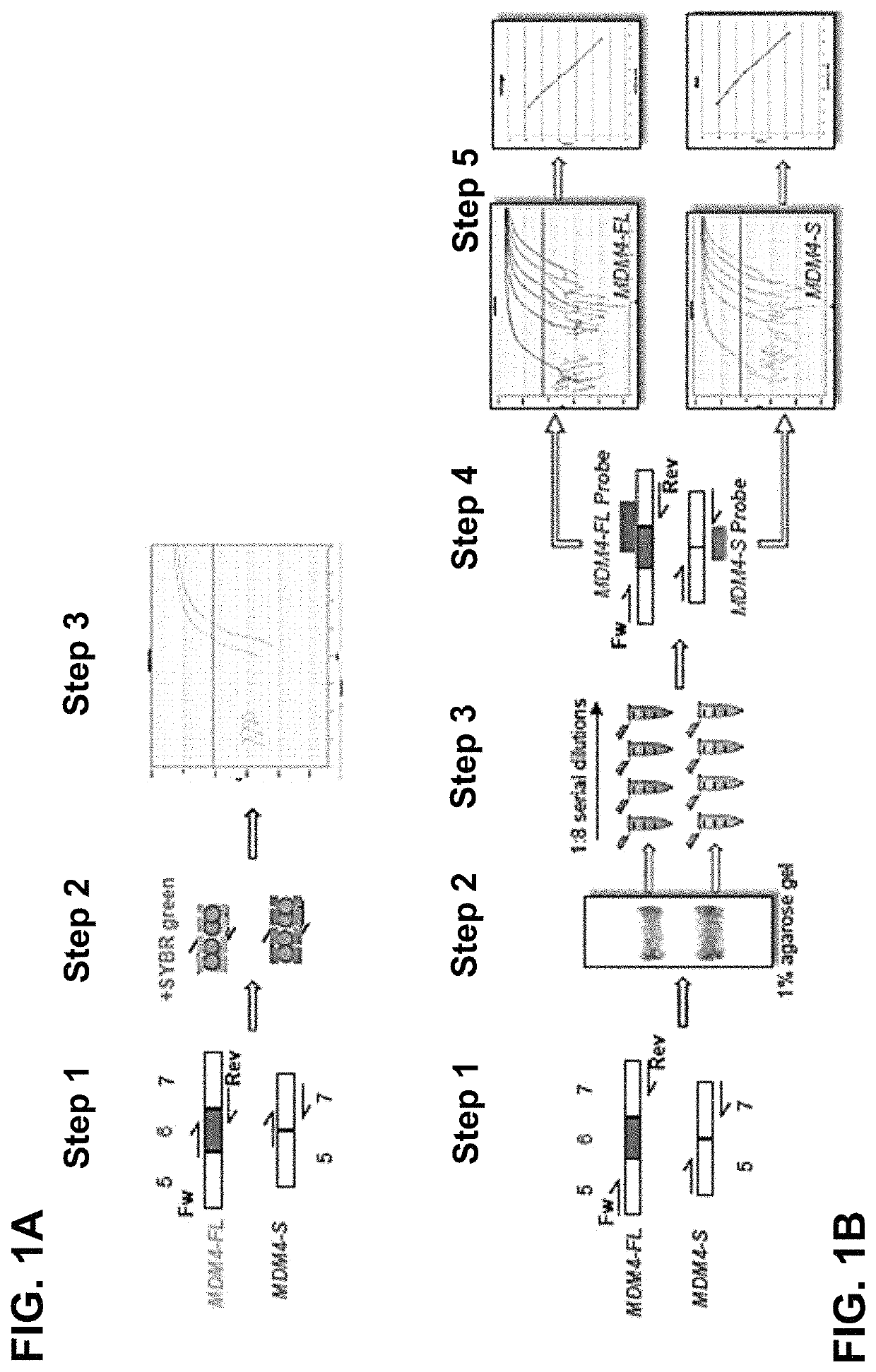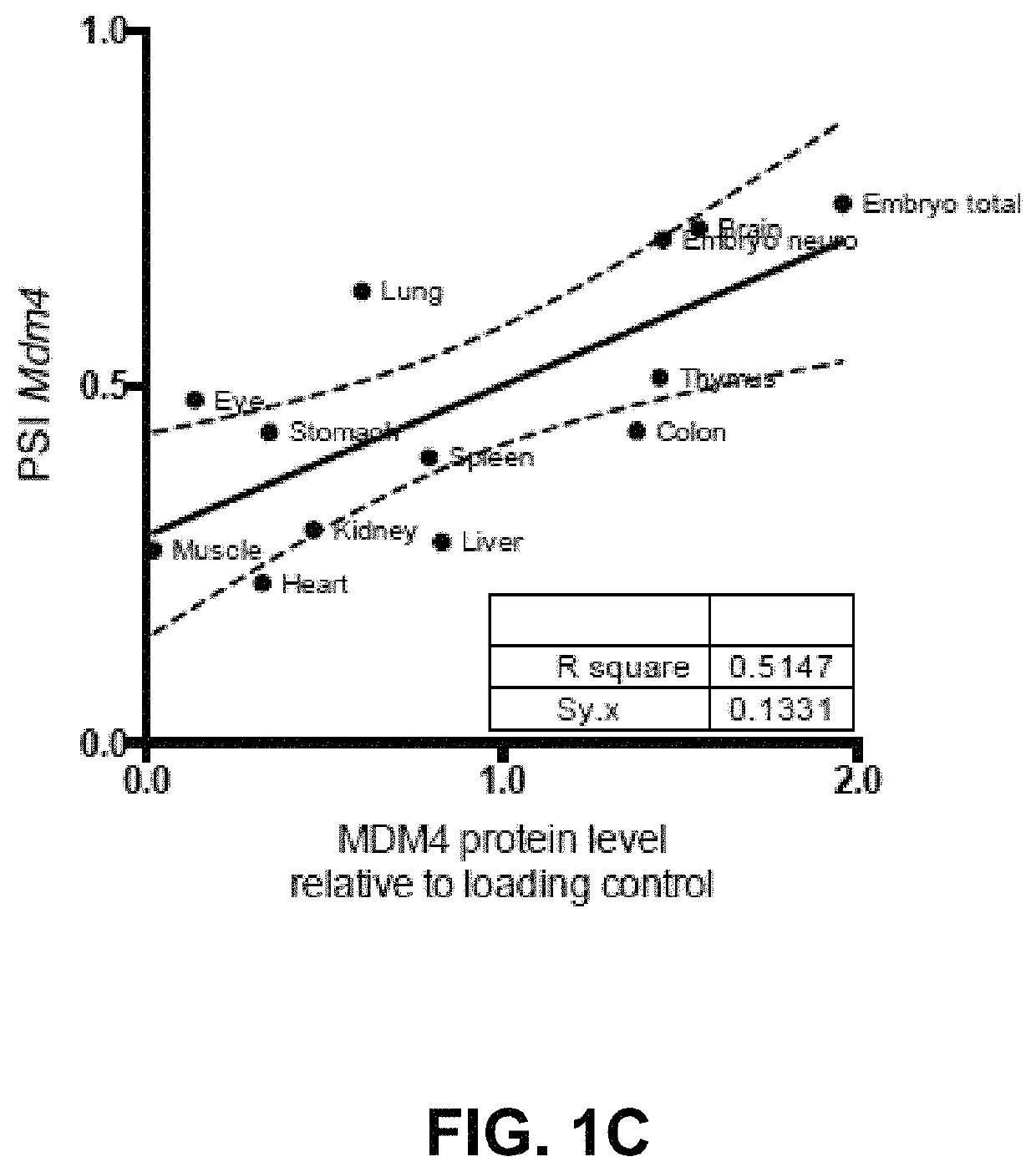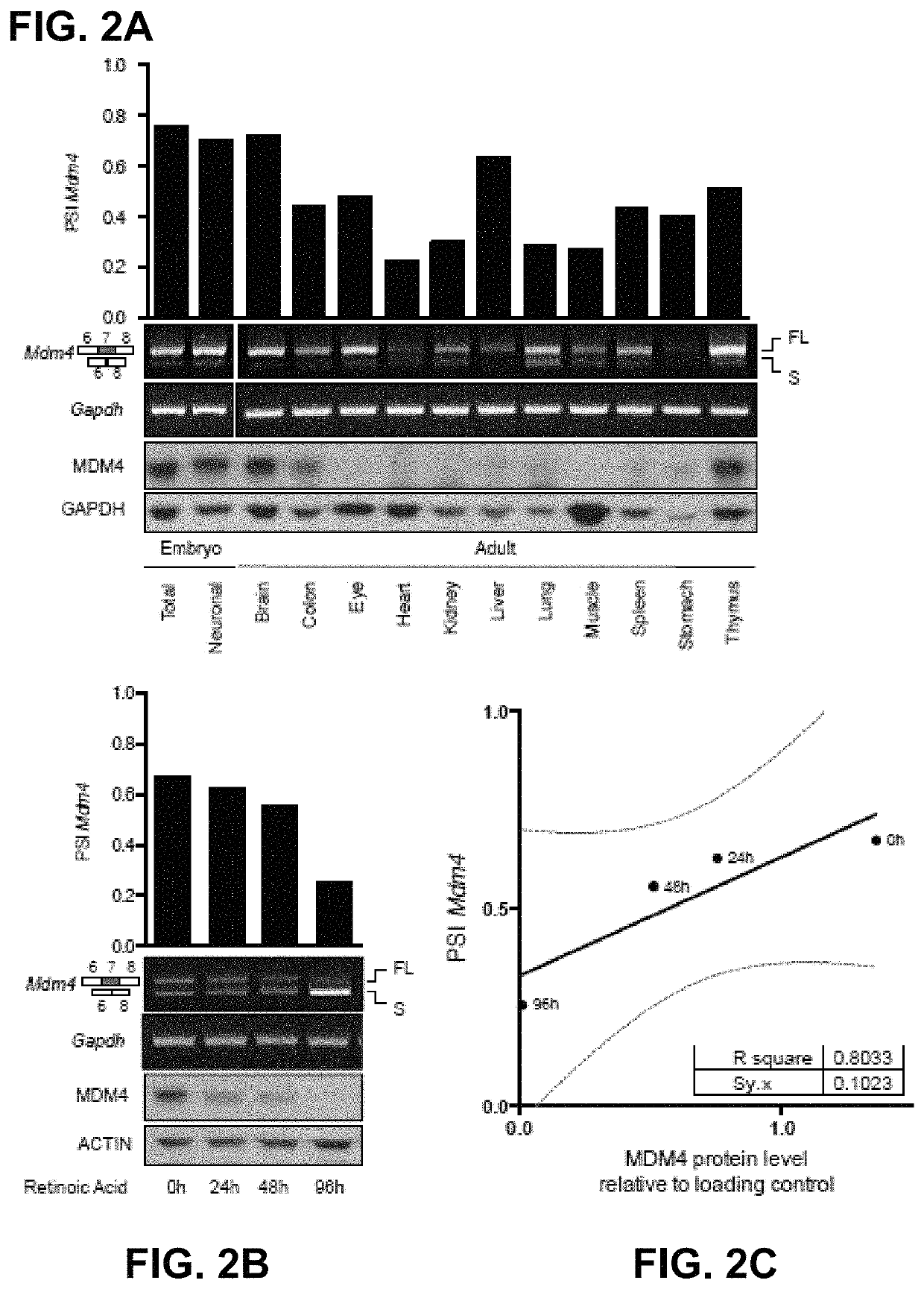Direct and selective inhibition of MDM4 for treatment of cancer
a selective inhibition and cancer technology, applied in the field of cancer, can solve the problems of increased apoptosis, worries about the safety of these inhibitors, widespread apoptosis in normal tissues, etc., and achieve the effects of enhancing the sensitivity of melanoma cells, reducing mdm4 abundance, and enhancing exon 6 inclusion
- Summary
- Abstract
- Description
- Claims
- Application Information
AI Technical Summary
Benefits of technology
Problems solved by technology
Method used
Image
Examples
example 1
cing and Expression in Normal Tissues and Cancer
[0089]1.1 MDM4 Protein Abundance is Controlled by a Specific Alternative Splicing Switch
[0090]The absence of direct correlation between total MDM4 mRNA levels and protein abundance in human melanoma (13) indicates that the post-transcriptional mechanism(s) are likely to contribute to MDM4 upregulation in cancers. Alternative splicing is one mechanism that modulates gene expression by adding or removing protein domains, affecting protein activity, or altering the stability of the mRNA transcripts (22, 23). In silico analysis of RNA-seq datasets (TGCA) from Skin Cutaneous Melanoma (SKCM) detected two MDM4 isoforms in addition to the full-length, of which MDM4-S was the most abundant (data not shown). MDM4-S (also known as HDMX-s) is an evolutionarily conserved splicing variant resulting from exclusion of exon 6 (25). Although the MDM4-S transcript is expected to produce a truncated protein there is no conclusive evidence supporting expre...
example 2
Required for Efficient Inclusion of MDM4 Exon 6
[0097]In order to identify regulators of MDM4 exon 6 splicing, available high-throughput sequencing of RNA isolated by cross-linking immunoprecipitation (HITS- and PAR-CLIP)-datasets were mined (30-35). Four members of the SR-family were identified as putative regulators of this splicing event in mouse cells (FIG. 5A). Since the genomic region surrounding human exon 6 is highly conserved in vertebrates (PyloP conservation plot in FIG. 5A), tests were performed to determine whether this family of splicing factors is modulating exon 6 inclusion in human cells. SRSF1-12 was depleted individually with short-hairpin RNAs (shRNAs) in A375 melanoma cells and quantified the PSI index (FIG. 6A). Strikingly, depletion of SRSF3 robustly induced MDM4 exon 6 skipping. In contrast, KD SRSF7, SRSF9 and SRSF11 unexpectedly increased the inclusion of exon 6. These data indicate that alternative splicing of MDM4 is highly regulated by multiple splicing f...
example 3
Oligonucleotide (ASO)-Mediated Exon 6 Skipping Efficiently Decreases MDM4 Abundance and Melanoma Growth
[0106]In order to more specifically target exon 6 inclusion, a splice switching morpholino ASO was designed, flanking the exon-intron boundaries of exon 6 (ASO MDM4) and overlapping with one of the SRSF3 binding sites (FIG. 6B). Transfection of a series of MDM4-expressing melanoma cell lines and short-term cultures with ASO MDM4, but not with a non-targeting / scramble ASO control (Scr), led to efficient exon 6 skipping and a subsequent decrease in MDM4 protein abundance (FIGS. 7A and 7B). Notably, the exon-skipping event was stable up to eight days post-transfection (FIG. 8A). ASO-induced exon 6 skipping unleashed p53 activity, as evidenced by an increase in expression of its well-established target genes p21 and MDM2 (FIG. 7A). Accordingly, ASO MDM4 decreased the ability of TP53-wild-type melanoma cultures to grow in vitro (FIG. 7B and FIG. 8B). Although a morpholino backbone was s...
PUM
| Property | Measurement | Unit |
|---|---|---|
| volume | aaaaa | aaaaa |
| volume | aaaaa | aaaaa |
| volume | aaaaa | aaaaa |
Abstract
Description
Claims
Application Information
 Login to View More
Login to View More - R&D
- Intellectual Property
- Life Sciences
- Materials
- Tech Scout
- Unparalleled Data Quality
- Higher Quality Content
- 60% Fewer Hallucinations
Browse by: Latest US Patents, China's latest patents, Technical Efficacy Thesaurus, Application Domain, Technology Topic, Popular Technical Reports.
© 2025 PatSnap. All rights reserved.Legal|Privacy policy|Modern Slavery Act Transparency Statement|Sitemap|About US| Contact US: help@patsnap.com



